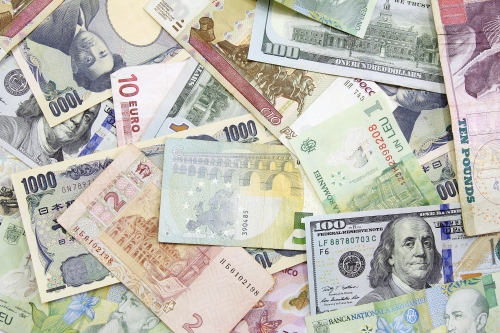I did a road trip around the UK some years back. A pound cost around NZ$2.70. As we filled up the little Peugeot, ate, drank, and became the victims of British customer service — I thought we were going to go bankrupt. The sickly Kiwi did not stretch far.
Then, in 2016, we were living there, post-Brexit. The pound collapsed to $1.70. The Kiwi rock star economy was pleasing the currency speculators. And with some earnings from NZ, we were living like dukes.
‘Tennerfest’ in September provided memorable value. A three-course meal at a nice restaurant — espetadas, lobsters, sirloin, whatever you like — for £10. Or $17. Add a pint of beer or a Spanish red for £3 ($5.10).
Boy, does that GBP.NZD pair make a difference.
When it comes to investing in global markets, what a lot of people don’t realise is that there are two potential drivers of return:
- Buying foreign currency at a value price and obtaining forex gain.
- Buying foreign shares (or other financial instrument) in the foreign currency, also at a value price — and obtaining capital gain.
So how do you know when there might be a currency upside opportunity?
The reality is there are many unknowns. I’ve been wrong several times. But there are a few shortcuts I use that have delivered. Let me share them with you.
Each currency pair has unique dynamics — and it takes some time to get a feel for them
I’m only across a handful of these pairs: GBP.NZD, AUD.NZD and USD.NZD.
Watch a pair over the years. Visit the countries where the currency is spent. Understand whether those breakfasts in British pubs are too cheap (in NZD) — or not. Get a feel for any gap in value.
Today, at around $1.890, the pound still seems cheap to me. But that’s for good reason. Buy sterling and you embrace all the unknowns of Brexit, plus the wild card that is Boris Johnson.
Well, you don’t get something for nothing.
The Aussie at around $1.045 Kiwi also looks reasonable. But the Australian economy is shaking more than ours. The Reserve Bank there has cut the cash rate hard. And as AUD.NZD is not a widely traded pair, it’s been possible in the recent past to get it for $1.03 or less.
I doubt there’s reason for parity. But Australia is very exposed to China right now. Perhaps in a larger way than us. So you never know.
As for USD.NZD — I’ve some regrets there. Some years back, USD could be bought for $1.15 Kiwi. Now it’s around $1.50. Why? The US economy is booming after tax cuts and a deregulatory approach. Fed interest rates are relatively high.
Short of AOC taking office or a major skirmish with North Korea or Iran, I don’t see any value reappearing there for a long while.
Interest rates are usually the biggest impact
The cash rates set by the central banks in each country play a significant role in currency valuations. NZD has been softening since the Reserve Bank lowered the OCR. AUD seems on an even steeper path. USD is holding strong with a Fed cash rate ahead of ours — but is softening with talk of a potential cut.
There are a host of other factors which impact
When looking at a pair — GBP.NZD, for example — numerous factors affect the relative strength and weakness of both GBP and NZD.
Both currencies are impacted by economic stats immediately after they’re published. Weak job growth — the currency may slide. A boost in GDP — it should go up. A decline in business confidence — maybe a fall.
So you need to keep an eye on the economic indicators for each side of the currency pair you’re looking to trade.
There are also unique features for each country/currency. For example, NZD is exposed to the global price of milk solids. Keep an eye on the results of those dairy auctions!
GBP, for now, is heavily exposed to Brexit risk. We still don’t know how the UK will leave the EU. GBP seems to strengthen with prospects of a deal or staying in the EU after all. Courageous Boris Johnson and risks of no deal seem to weaken it.
Watch that space.
Keeping an eye
Many fund managers, exporters, and traders are resigned to the fact they cannot easily predict forex movements. For this reason, they will often use hedging to cover movements. This comes with a cost.
If you are looking to use forex as a potential driver of return, it is not without significant risk. And you need to do your homework.
One resource I use is OFX. They publish daily and weekly market news on the Kiwi dollar in relation to the other major currencies. You can find their news here.
If that’s all a bit much to digest right now, what we can say is that it doesn’t look like a half-bad time to visit Britain or Australia, given the forex rates.
Happy trading — or travels!
Regards,
Simon Angelo
Analyst, Money Morning New Zealand
Important disclosures
Simon Angelo trades/holds various foreign currencies via wealth manager Vistafolio. Forex trading involves risks and values may move up or down quickly. No recommendations are given.
